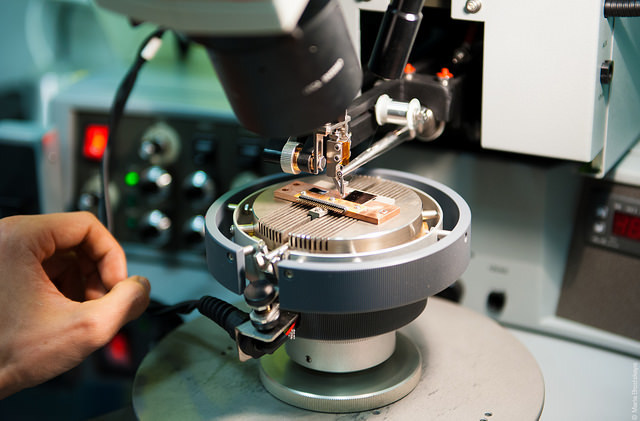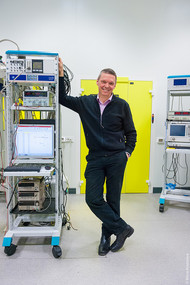An international team of quantum physicists have learned how to simulate processes which can help to decipher the mechanisms of photosynthesis. By creating a system based only on a single superconducting qubit at almost absolute zero temperature, scientists have managed to propel the quantum mechanical modeling of natural processes to a new level. The research article on the results was published in NatureCommunications.
“A group of international scientists from NUST MISIS, the Russian Quantum Center, Karlsruhe Institute of Technology and Johannes Gutenberg University Mainz, with the active participation of Professor Alexey Ustinov, the head of the NUST MISIS Laboratory of Superconducting Metamaterials, have demonstrated the capability to solve a number of fundamental problems in the field of quantum physics and quantum chemistry—problems associated with the interaction of light and matter. These systems, based on superconducting qubits, allow us to solve tasks that conventional supercomputers can`t handle”, Alevtina Chernikova, Rector of NUST MISIS, said.
Professor Alexey Ustinov, head of the NUST MISIS Laboratory of Superconducting Metamaterials and one of the research authors explained: the issue occurs in systems with a strong interaction of light and matter, when the strength of this interaction is comparable to the value of transition between energy levels. When this interaction is weak, then there are approximate methods that help to solve tasks on computers — to calculate the energy of quantum states and to see the changes in the system. But there are processes in nature where the interaction between light and matter can`t be weak. For example, photosynthesis. In photosynthesis, a photon — a quantum of light — is absorbed, and its energy is absorbed almost completely when interacting with matter. The efficiency of this process is more than 50%. This is a highly effective process of converting light energy into energy, stored in matter. And in this new field, already known as “quantum biology”, there is an idea explaining that such processes are associated with quantum mechanical energy conversion due to the very strong interaction between light and matter.
“Generally speaking, quantum mechanics is arranged so that there is no way to introduce energy losses into [a process] correctly. To take energy losses into account during an interaction of light and matter (and we have to consider this because it exists), physicists have come up with the following: they say that quantum physics interacts with a large number of oscillators that take energy from a quantum system. It is relatively easy to calculate this when the interaction is weak, and physicists have developed several models. There are no calculation methods for cases when the interacting force between light and matter is substantial (and this option is why it’s interesting to understand many important processes). A large interacting force is one where the interaction energy is comparable to the difference between energy levels. [The ensuing] simulation, called quantum simulation, comes to the rescue. A model, on which it is possible to calculate how strong interactions occur, has been created with the use of superconducting circuits”, Professor Ustinov noted.
In this case, a scheme designed for modeling strong interactions was made, and its characteristics were measured. It turns out that beats are the most distinctive feature that occur within the system. That means that not only do fluctuations happen in the system, but their amplitude starts to adjust its own frequency. These beats show that there is a strong interaction in the system.
Professor Ustinov also remarked that such a system, in which there is only one oscillator and only one two-level system (that is, the particle can make only one energy transition between levels) can be calculated on a computer. However this calculation becomes impossible as soon as the system becomes more complex. On the other hand, similar systems developed in this sphere allow scientists to solve a wide variety of similarly complex tasks.






